In this article, you’ll learn what is power hammers? and How it is used in the forging workshop? and different types of power hammers with their applications and more. And also you can also download the PDF file at the end.
What is Power Hammer?
The power hammers were often called the forging power hammers, and it depends on steam to create pressure and blow the tool, but new versions rather come with pneumatic or electric.
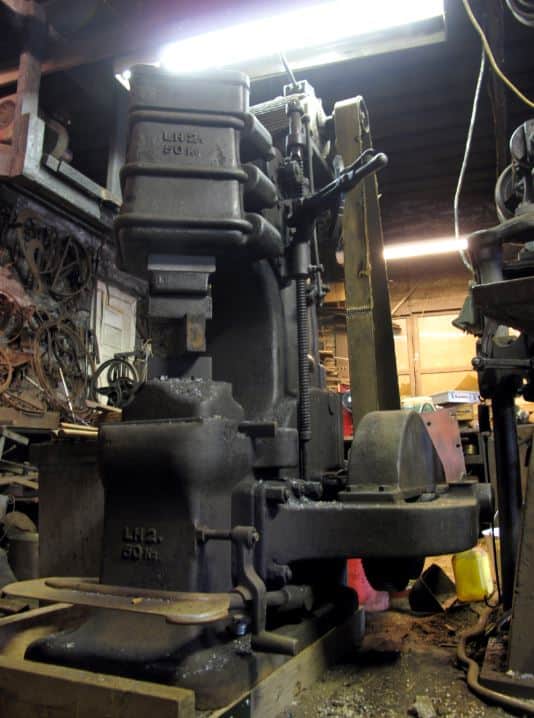
You may wonder about how forging power hammers work? In simple words, it works like a hammer, when the force is applied in the opposite direction it rapidly moves downwards, whatever object you hold under it.
It uses some form of pressure that first creates force, the strike is much faster and with greater force than if you were using a hammer or even a hydraulic press.
Power hammers are also much larger in size than other tools. The greater the force required, the larger the machinery and old models can take up to more space in your shop or more.
These machines also produce smoother, more uniform outcomes. Since the sheer mass of the device receives vibrations and movements through weight. Let’s deal with some of the main forging power hammers that used in forging.
Types of Power Hammers
Types of forging power hammers used in forging shop:
- Lever-Spring hammers
- Pneumatic hammers
- Steam or air hammers
- Helve hammers
- Hydraulic hammers
1. Lever-Spring Hammer
It is a very light type of power hammer and it is used for small forgings. It consists of a heavy frame with a vertical projection at its top. This projection acts as a housing to bearing in which the laminated spring oscillates.
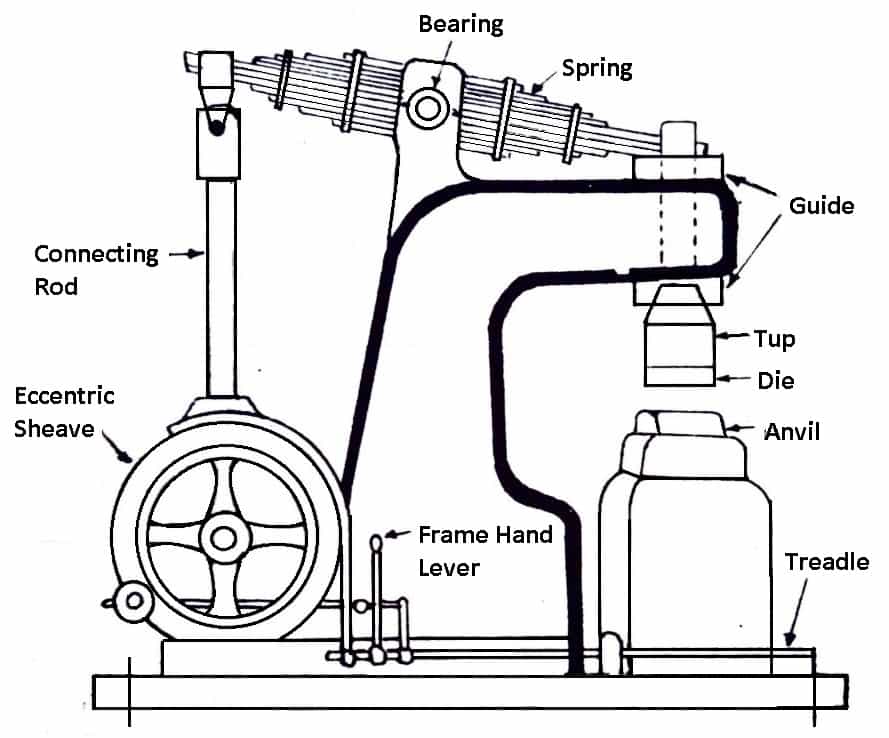
One end of this spring carries a connecting rod and the other end a vertical tup. The tup carries weight and moves vertically up and down between fixed guides. The connecting rod is attached to an eccentric sheave as its lower end.
Eccentric sheave is further connected to the crank wheel. For operating the hammer, the treadle is pressed downwards. This makes the sheave rotate through the crank wheel and hence the laminated spring starts oscillating in the bearing.
This oscillation of the spring causes the tup to move up and down. Thus, the required blows are provided on the job. The hand lever is operated to adjust the stroke of the connecting rod and hence the intensity of blows.
2. Pneumatic Power Hammer
A typical form of the pneumatic hammer is shown in the figure. It carries a cylinder (C). A piston works inside this cylinder. The piston is connected to the main motor shaft by means of a crank and connecting rod mechanism.
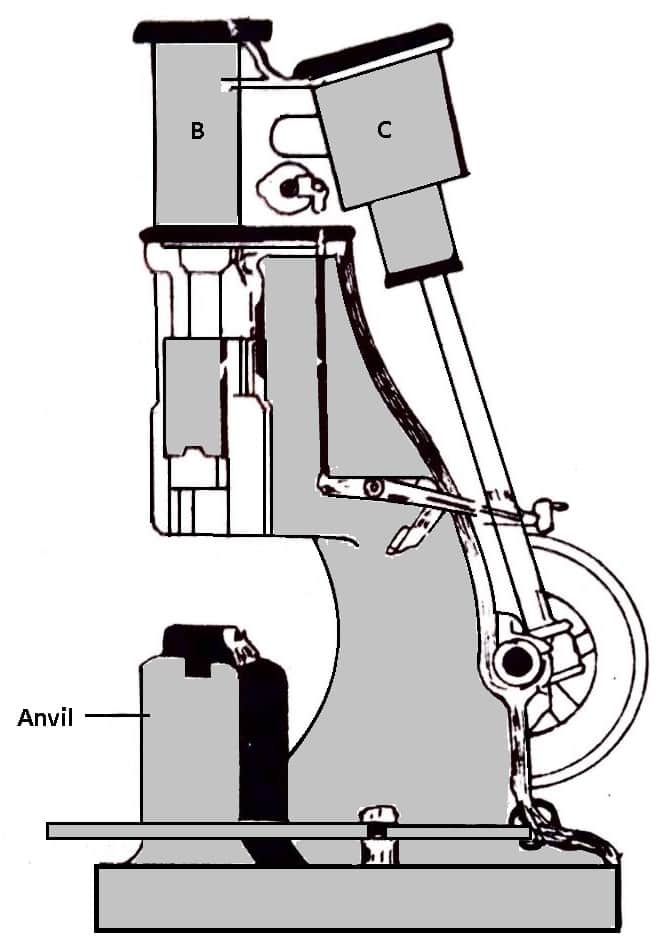
A hand lever operates an air valve. The air valve is provided on the air passage from cylinder (C) to cylinder (B). Another piston works inside the cylinder (B). This piston carries tup at its bottom and it is made to slide fixed guides.
Let the tup be resting on the anvil. To start the motion of the tup, the piston in the cylinder (C) is moved downwards creating the vacuum above the piston in the cylinder (B). This provides a suction effect on the piston and hence the tup starts lifting.
A little before the end of the upward stroke of the piston, in-cylinder (B), the air is forced from cylinder (C) to cylinder (B). In cylinder (B), the air is compressed due to the upward stroke of the piston.
This in turn forces the piston and hence the tup downwards with a high velocity. This operation is repeated again and again and the required blows are obtained.
3. Steam or Air Power Hammer
A steam-power hammer can be performed by either steam or compressed air. It includes a moving ram, rod, and piston, a lifting tool, a double-acting high-pressure steam cylinder, housing or frame, and anvil.
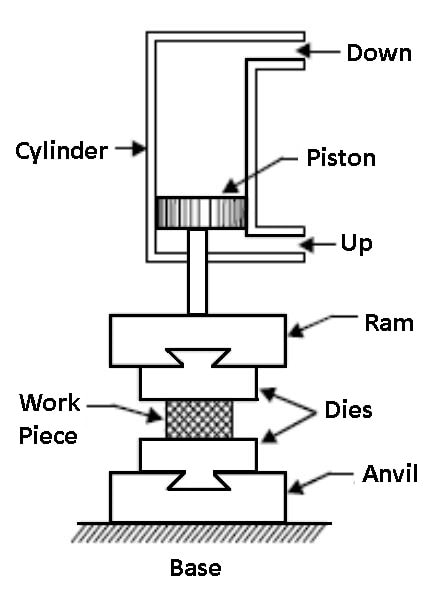
In these types of forging power hammers, initially, steam is entering the bottom of the cylinder and the piston is lifted upward, along with other moving parts. The velocity of force is about 3m/sec, while the mass of the moving parts is up to 5000kg.
When a required blow needed, the lever is energized, and the top sliding value is open to receive steam on the above of the cylinder and the exhaust steam remains on the bottom. Hence, the required blows are obtained.
4. Helve Power Hammer
A helve power hammer, also known as a trip or tilt power hammer, is a huge powered hammer. These are types of forging power hammers, in which more than one helve hammers were installed in a forge, also known as a hammer mill.
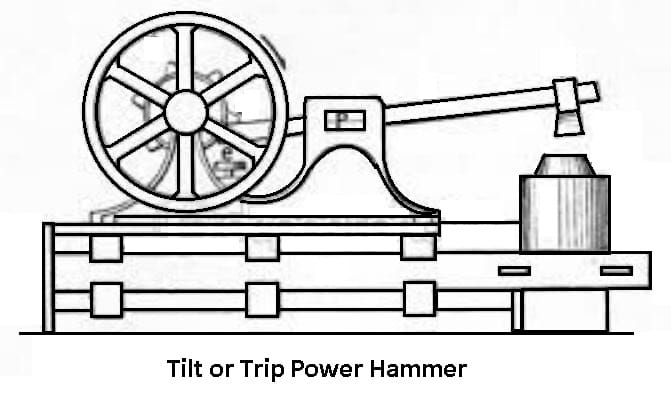
These forging power hammers normally lifted with a cam and suddenly released to drop under the force of gravity. The helve hammers were usually hydraulically driven by a water wheel.
They are used to make blooms made of iron into more workable bar iron in finery forges. Moreover, they are also employed to fabricate various articles of wrought iron, latten (a form of brass), steel, and other metals.
5. Hydraulic Power Hammer
The hydraulic hammers also known as hydraulic presses. It uses 200 to 300 times higher oil pressure than the atmospheric pressure in the hydraulic cylinder. Hydraulic presses are applied in heavy forgings.
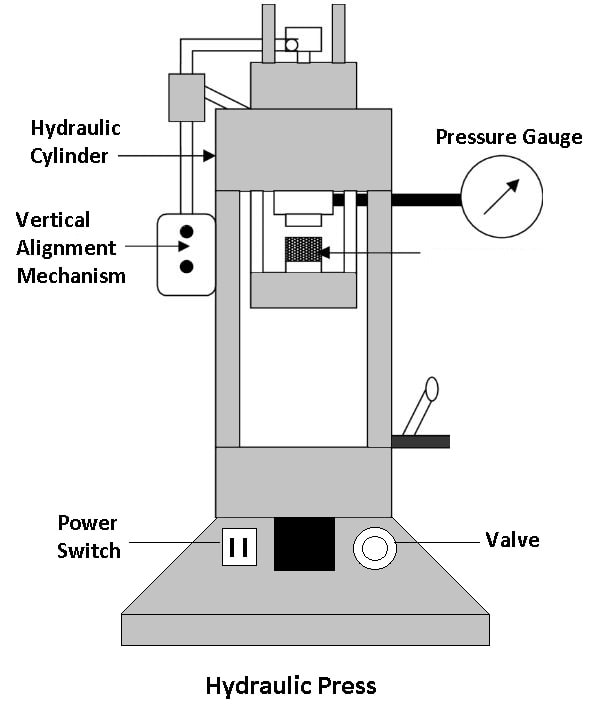
It consists of a press and hydraulic drive. The rate of production in hydraulic presses is normally faster than other hammer forgings, as the entire operation is completed in a single squeezing action.
Unlike mechanical presses and other hammers, the hydraulic hammer has low noise and vibration. In these presses, the speed, blow pressure and die travel are automatically controlled.
Presses that can provide a force of 75000 tons are pretty common. Hydraulic presses are used in forging industries almost ranges from 1000 tons to 10,000 tons. These presses are used for the production of nuts, bolts, screws, and rivets.
Application of Forging Power Hammer
Since the 1880s, they have been using by blacksmiths, replacing trip hammers to reduce the cost of the machine by the use of simple mechanisms. It is a type of machine tool that is used in a forging operation.
In addition to forging, they are also used to close the rivet and strike steel tools. The design and use of a forging power hammer are similar to a manual hammer, but that cuts and welds are more precise.
Conclusion
As you know now, by using these hammers, you can have complete deformation of the workpiece. This usually only deforms the surfaces of the workpiece in contact with the hammer and anvil. The interior of the workpiece will be relatively safe.
That’s it. We have discussed all the “types of Power Hammers” that are used by blacksmiths in forging. But if you still have any questions on this article you can ask in the comment we will respond to you.
If you like this article then please share it with your friends. And also you can download the free PDF file of this article by clicking below.
Subscribe to our newsletter to get notification of our new posts. It’s free.
You may like to read more in our blog: